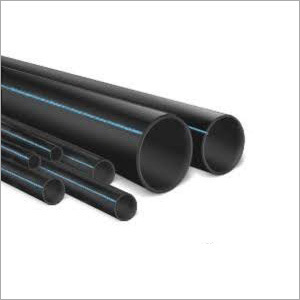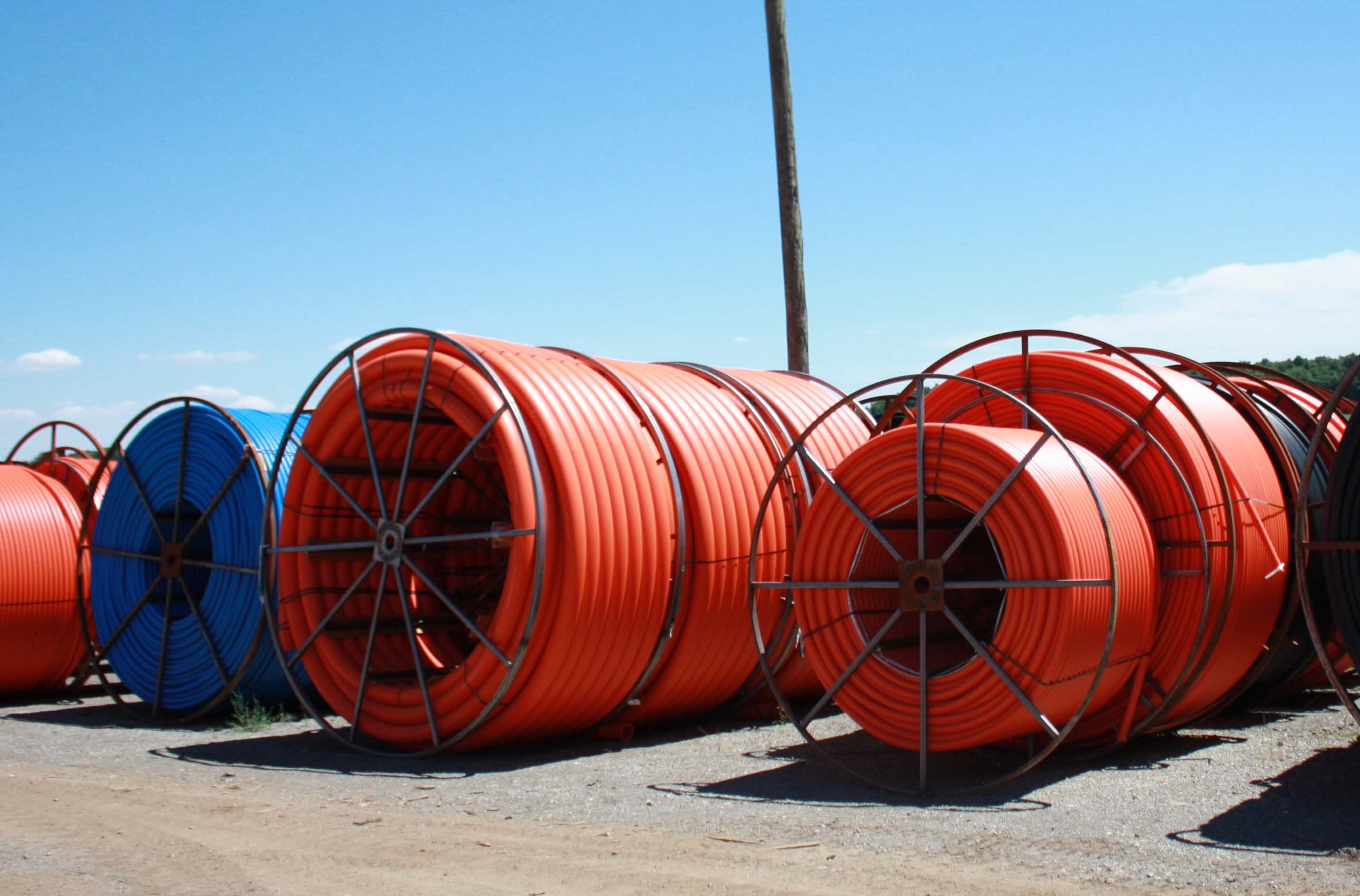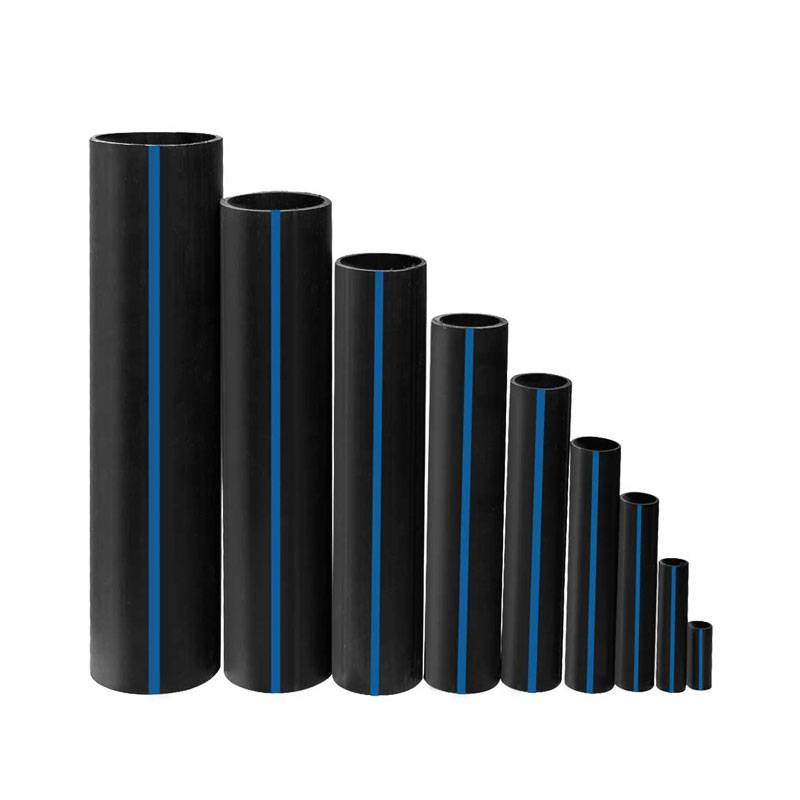Discover the Manufacturing Process Behind High-Quality HDPE Pipeline and Its Applications
The manufacturing procedure of high-grade HDPE pipelines is detailed and systematic. It begins with the choice of resources that enhance efficiency. Following this, ethylene undertakes polymerization to create resin, which is after that shaped via extrusion. Quality control is paramount, making certain that the final product fulfills rigid criteria. The journey of HDPE pipes doesn't finish with manufacturing. Their applications across various markets disclose a more comprehensive significance worth examining.
Comprehending HDPE: Properties and Advantages

High-density polyethylene (HDPE) is a functional polycarbonate recognized for its resilience and resistance to numerous ecological aspects. This product displays exceptional tensile strength, making it ideal for demanding applications. Its low-density framework adds to a light-weight item, assisting in ease of handling and installation. HDPE likewise showcases remarkable resistance to chemicals, which reduces deterioration when exposed to rough compounds.
The product's reduced moisture absorption better enhances its long life, making it excellent for usage in pipes and storage space containers. In addition, HDPE is immune to ultraviolet (UV) radiation, ensuring that products keep their stability also when subjected to sunshine. Its adaptability allows for the creation of elaborate forms without compromising toughness. The green nature of HDPE, commonly originated from recycled materials, includes in its appeal, advertising sustainable techniques in manufacturing. On the whole, these properties and benefits make HDPE a recommended selection for different industrial and consumer applications.
Raw Material Option for HDPE Production
The option of resources for HDPE manufacturing is important to verify the last product fulfills the preferred requirements and top quality standards. High-density polyethylene (HDPE) is largely created from polymerized ethylene, acquired from nonrenewable fuel sources such as all-natural gas or petroleum. The quality of these feedstocks significantly influences the mechanical and thermal residential or commercial properties of the last HDPE.
Ingredients likewise play a considerable function in enhancing HDPE's performance, consisting of anti-oxidants, UV stabilizers, and colorants, which enhance longevity and resistance to environmental factors. The option process have to consider not just the chemical composition of the raw materials however also their processing qualities to guarantee reliable manufacturing.
Moreover, the sourcing of resources should focus on sustainability and conformity with environmental regulations, as accountable practices are vital in today's market. Eventually, cautious raw product choice lays the foundation for producing top notch HDPE pipelines ideal for varied applications.
The Extrusion Refine: Shaping HDPE Pipeline
The extrusion procedure plays a vital role in shaping HDPE pipelines, beginning with thorough material preparation strategies that assure excellent circulation and consistency. Just as vital is the style of the die, which directly affects the last measurements and surface high quality of the pipeline. Together, these variables add substantially to the efficiency and quality of HDPE pipeline manufacturing.
Material Preparation Techniques
Effective production of HDPE pipes starts with thorough product preparation methods, especially the extrusion process. During this phase, high-density polyethylene material is first dried to eliminate wetness, ensuring perfect circulation characteristics. The material is then fed into the extruder, where it undergoes heating and melting, changing into a viscous state. This heating process is carefully managed to preserve the material's honesty and efficiency. The liquified HDPE is required with a die, forming it right into a continuous pipe form. Correct temperature level management throughout extrusion is important, as it straight influences the material's properties and the final item top quality. When formed, the HDPE pipe is cooled down and reduced to specified sizes, all set for succeeding handling and applications.
Die Design Importance
Precision in die style plays an important function in the extrusion procedure of HDPE pipelines. The die serves as the final shaping tool, directly affecting the pipeline's measurements, wall surface thickness, and surface coating. A well-designed die warranties uniform product circulation, reducing flaws such as abnormalities and weak places. The geometry of the die must be optimized to fit the specific residential or commercial properties of HDPE, including its thickness and thermal habits during extrusion. Additionally, the cooling rate of the material as it travels through the die can considerably affect the pipeline's architectural honesty. Spending in advanced die technology is essential for suppliers aiming to produce high-grade HDPE pipelines that fulfill industry standards and consumer expectations.
Top Quality Control Measures in HDPE Production
Although various variables influence the quality of HDPE pipe production, efficient quality assurance procedures are essential to ensure uniformity and reliability in the end product. Key high quality control practices include strenuous product examination, validating that the raw polyethylene satisfies established criteria for pureness and thickness. Throughout the extrusion process, parameters such as temperature, stress, and cooling time are closely checked to preserve dimensional accuracy and architectural integrity
Additionally, post-production screening is necessary; manufacturers commonly perform hydrostatic tests to analyze the pipeline's strength and resistance to stress. Visual evaluations for surface flaws further improve top quality guarantee. Certification from pertinent requirements organizations, like ASTM or ISO, provides an added layer of integrity. By implementing these detailed quality assurance measures, suppliers can decrease issues, improve efficiency, and make sure that the HDPE pipes fulfill the particular needs of numerous applications, ultimately bring about client complete satisfaction and count on the item.
Applications of HDPE Pipeline Throughout Industries
HDPE pipes are used throughout various fields because of their sturdiness and versatility. In water distribution systems, they guarantee reliable shipment, while in wastewater management, they supply reliable options for waste transportation. Furthermore, farming irrigation networks profit from HDPE's resistance to deterioration and versatility, making it an optimal selection for modern farming techniques.

Water Distribution Solutions
A substantial number of industries depend on high-density polyethylene (HDPE) pipes for reliable water circulation systems. Recognized for their durability and resistance to corrosion, HDPE pipes are commonly made use of in metropolitan water system networks, farming irrigation, and industrial applications. Their lightweight nature promotes simple handling and installation, decreasing labor prices and time. Furthermore, HDPE pipelines can fit various stress degrees, making them appropriate for both reduced and high-pressure systems. hdpe pipe suppliers Midland TX. The versatility of the material enables smooth integration right into existing infrastructure, minimizing the need for considerable excavation. Additionally, HDPE's resistance to chemical seeping guarantees that the water supplied remains safe and clean, making it a perfect option for keeping the quality of safe and clean water across various fields
Wastewater Management Solutions
Efficient water distribution systems additionally pave the way for ingenious wastewater monitoring services, where high-density polyethylene (HDPE) pipelines play a significant duty. Popular for their resilience and resistance to deterioration, HDPE pipes are excellent for transferring wastewater in numerous setups. Their adaptability permits here very easy installment in complex settings, decreasing the requirement for considerable excavation. In addition, HDPE's smooth indoor surface area reduces friction, boosting circulation rates and effectiveness. These pipes are additionally resistant to chemical leaching, making certain that impurities do not compromise the surrounding environment. Industries, municipalities, and therapy centers increasingly depend on HDPE pipelines for their dependability and durability, making them a favored choice for contemporary wastewater management systems. This adaptability emphasizes the critical relevance of HDPE pipes across numerous applications.
Agricultural Irrigation Networks
Agricultural watering networks benefit considerably from making use of high-density polyethylene (HDPE) pipes, which offer reliable and dependable water delivery to plants. HDPE pipelines are lightweight, making them simple to deliver and install, while their versatility enables various configurations in diverse surfaces. These pipes show excellent resistance to deterioration, chemicals, and UV radiation, ensuring longevity in rough farming settings. Additionally, their smooth interior surface area decreases rubbing loss, maximizing water circulation and reducing power expenses related to pumping. The longevity of HDPE pipelines, frequently surpassing half a century, adds to reduce upkeep and replacement costs. Farmers progressively count on HDPE pipelines to boost watering effectiveness and promote sustainable agricultural methods, inevitably leading to boosted crop returns and source conservation.

Future Trends in HDPE Pipe Modern Technology
As the demand for lasting and reliable facilities grows, innovations in HDPE pipeline modern technology are positioned to transform different sectors. Arising patterns include the assimilation of wise technologies, such as sensors and IoT capabilities, which promote real-time monitoring of pipe problems, minimizing maintenance prices and protecting against leakages. Additionally, the growth of innovative manufacturing methods, such as 3D printing, is making it possible for the production of facility, tailored pipeline layouts that deal with certain project demands.
The focus on recycling and round economic climate methods is driving the technology of HDPE pipes made from recycled products, boosting sustainability. Boosted jointing methods, such as electro-fusion and mechanical installations, are additionally boosting installation effectiveness and dependability. Finally, the expanding focus on ecological policies is pressing producers to embrace greener manufacturing processes, guaranteeing that HDPE pipes not just satisfy industry criteria yet additionally promote an even more lasting future for infrastructure growth.
Often Asked Inquiries
Just How Does HDPE Contrast to Other Plastic Materials?
HDPE outshines several various other plastic materials regarding durability, chemical resistance, and adaptability. Its reduced density and high tensile stamina make it perfect for various applications, usually going beyond alternatives in both performance and longevity.
What Are the Ecological Effects of HDPE Manufacturing?
The ecological impacts of HDPE production consist of greenhouse gas discharges, energy intake, and prospective contamination from manufacturing processes. Furthermore, incorrect disposal can cause dirt and water contamination, raising issues regarding long-term environmental impacts.
Can HDPE Piping Be Reused?
Yes, HDPE pipelines can be reused. Several facilities approve made use of HDPE for processing, changing it into new items. This recycling contributes to sustainability initiatives, reducing plastic waste while preserving sources and power in the production cycle.
What Is the Lifespan of HDPE Water Lines?

Just How Do Temperature Level Variants Impact HDPE Pipe Performance?
Temperature variants considerably affect HDPE pipeline efficiency, impacting versatility and strength. Heats can bring about softening, while low temperatures may trigger brittleness, ultimately affecting the pipe's longevity and suitability for various applications in diverse atmospheres.